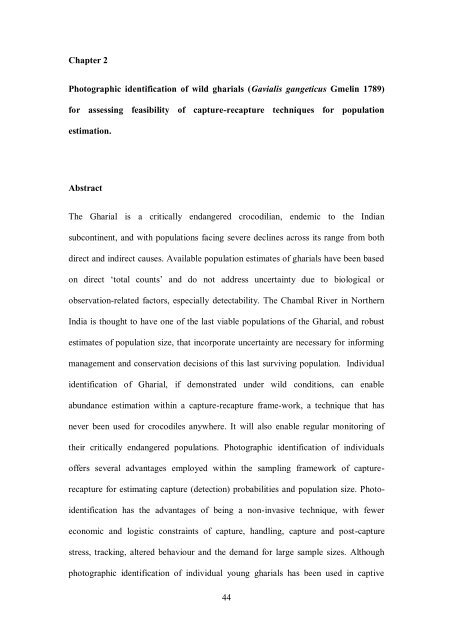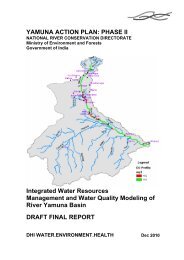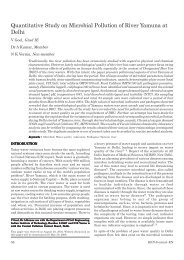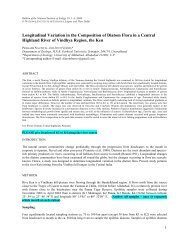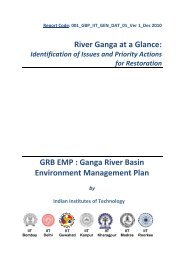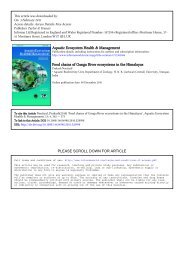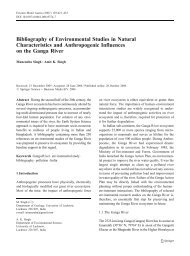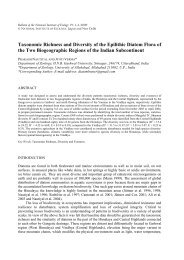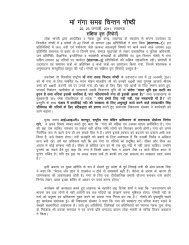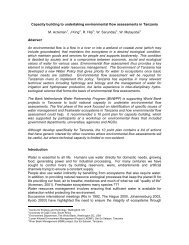Ecological and anthropogenic covariates ... - GANGAPEDIA
Ecological and anthropogenic covariates ... - GANGAPEDIA
Ecological and anthropogenic covariates ... - GANGAPEDIA
Create successful ePaper yourself
Turn your PDF publications into a flip-book with our unique Google optimized e-Paper software.
Chapter 2<br />
Photographic identification of wild gharials (Gavialis gangeticus Gmelin 1789)<br />
for assessing feasibility of capture-recapture techniques for population<br />
estimation.<br />
Abstract<br />
The Gharial is a critically endangered crocodilian, endemic to the Indian<br />
subcontinent, <strong>and</strong> with populations facing severe declines across its range from both<br />
direct <strong>and</strong> indirect causes. Available population estimates of gharials have been based<br />
on direct ‘total counts’ <strong>and</strong> do not address uncertainty due to biological or<br />
observation-related factors, especially detectability. The Chambal River in Northern<br />
India is thought to have one of the last viable populations of the Gharial, <strong>and</strong> robust<br />
estimates of population size, that incorporate uncertainty are necessary for informing<br />
management <strong>and</strong> conservation decisions of this last surviving population. Individual<br />
identification of Gharial, if demonstrated under wild conditions, can enable<br />
abundance estimation within a capture-recapture frame-work, a technique that has<br />
never been used for crocodiles anywhere. It will also enable regular monitoring of<br />
their critically endangered populations. Photographic identification of individuals<br />
offers several advantages employed within the sampling framework of capture-<br />
recapture for estimating capture (detection) probabilities <strong>and</strong> population size. Photo-<br />
identification has the advantages of being a non-invasive technique, with fewer<br />
economic <strong>and</strong> logistic constraints of capture, h<strong>and</strong>ling, capture <strong>and</strong> post-capture<br />
stress, tracking, altered behaviour <strong>and</strong> the dem<strong>and</strong> for large sample sizes. Although<br />
photographic identification of individual young gharials has been used in captive<br />
44


